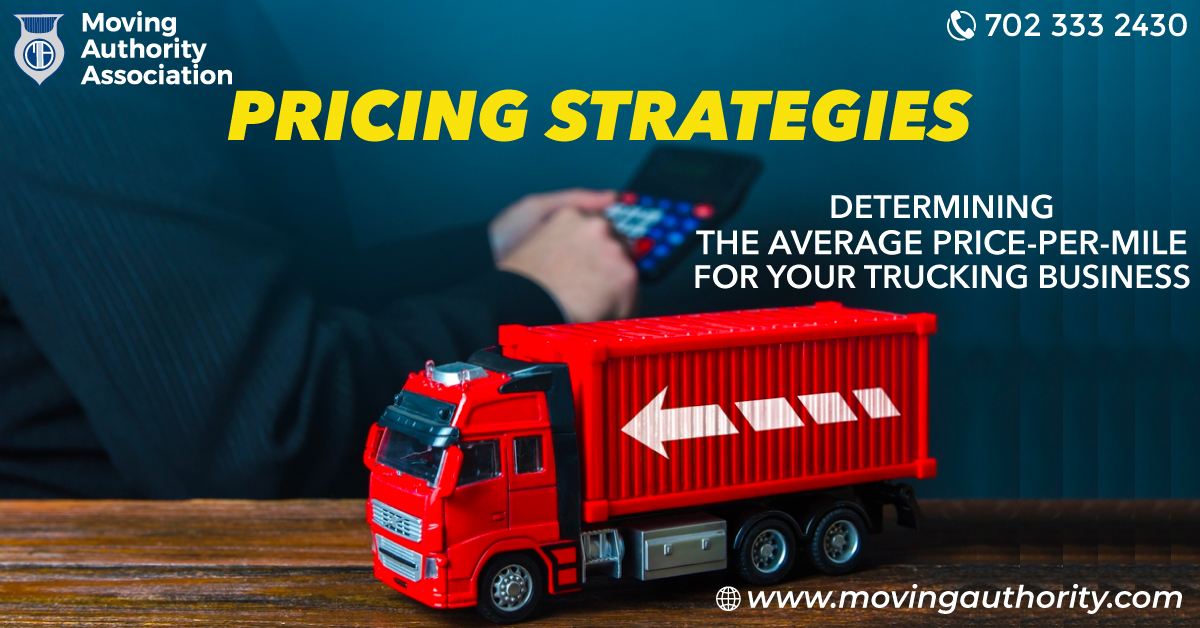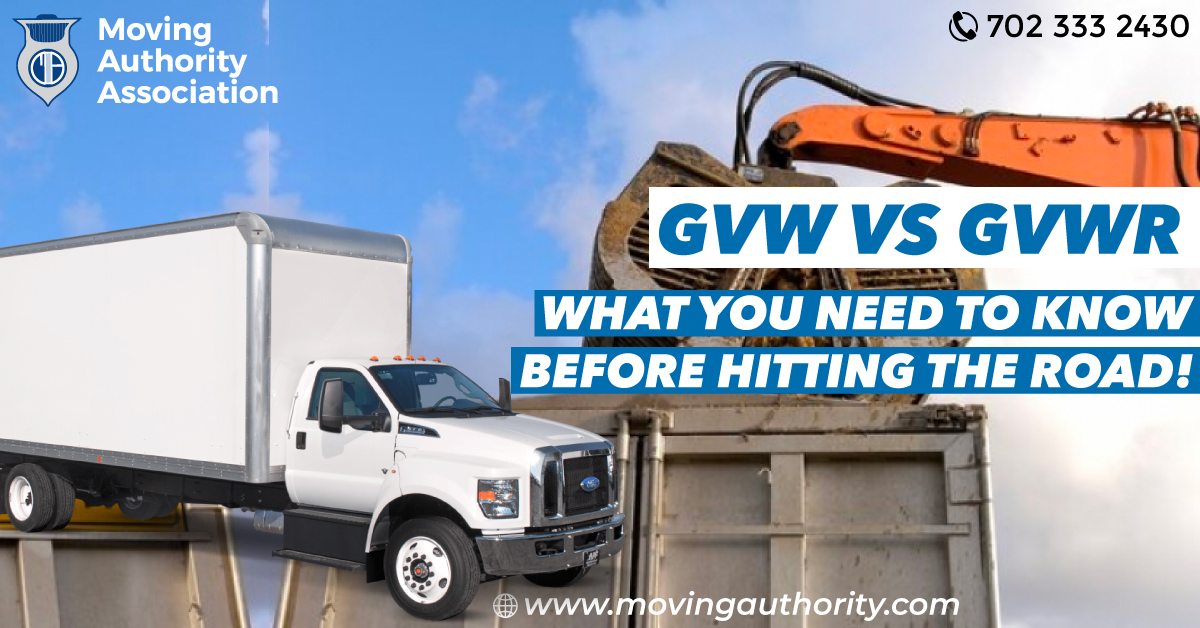
Pricing Strategies, Determining The Average Price-Per-Mile for Your Trucking Business
Are you new to the transportation industry and looking to navigate the complex world of pricing strategies? Learn more about Starting a Trucking Company. Pricing plays a crucial role in the success of your trucking business, as it directly impacts your profitability, competitiveness, and long-term sustainability. Understanding how to determine the average price-per-mile for your services is essential for making informed pricing decisions. In this article, we will guide you through the process of pricing your trucking services, providing valuable insights and strategies to help you establish competitive rates while maximizing your profitability.
As a newcomer to the industry, it's important to recognize that pricing in the trucking business is not a one-size-fits-all approach. Do you Want to know the BOC-3 Filing? It requires careful consideration of various factors, including your costs, market conditions, and customer expectations. By understanding these elements, you will be better equipped to set your prices strategically, ensuring that you cover your expenses, generate profit, and remain competitive in the market.
This article will explore different pricing methods and strategies tailored specifically to the transportation industry. Whether you offer freight hauling, logistics, or specialized services, this guide will provide practical tools and insights to help you determine the average price-per-mile that aligns with your business goals. Get ready to delve into the world of pricing strategies and unlock the key to profitable growth in the trucking industry.
Understanding Cost Factors
When it comes to determining the average price-per-mile for your trucking business, understanding the underlying cost factors is important. By examining the cost components in your trucking operations, you can gain insights into the financial aspects that contribute to your overall expenses. Learn more about Biennial Update. Cost components may include fuel, maintenance and repairs, insurance, permits, driver wages, equipment leasing or financing, and administrative expenses. By breaking down these costs, you can develop a comprehensive understanding of where your money is being allocated and how it impacts your pricing decisions.
Several factors influence the cost-per-mile calculation in the trucking industry. Fuel prices play a significant role, as they can fluctuate greatly and have a direct impact on your operational costs. FMCSA BOC 3 Filing: Everything You Need To Know For Trucking Business Operation. Additionally, the type and condition of your equipment, driver wages, insurance rates, and maintenance expenses are all factors that affect your cost-per-mile. It's important to regularly review and update these cost factors to ensure accuracy in your pricing calculations and to account for any changes in the market or your business operations.
Fixed costs and variable costs are two key categories that impact your pricing decisions. Fixed costs include relatively stable expenses, regardless of the distance traveled or the number of loads hauled. These costs may include insurance premiums, lease or finance payments for equipment, and administrative expenses. Read more about Broker Freight Package. On the other hand, variable costs fluctuate based on factors such as mileage, fuel consumption, and maintenance needs. Understanding the interplay between fixed and variable costs is essential for setting your prices appropriately and ensuring that you cover both types of expenses while maintaining profitability.
By comprehensively understanding the cost components, factors influencing the cost-per-mile calculation, and the impact of fixed and variable costs, you can make informed pricing decisions for your trucking business. Considering these factors will help you establish competitive rates that align with your costs and ensure a sustainable profit margin. It's essential to regularly review and analyze these factors as your business evolves to maintain an accurate pricing strategy that maximizes your profitability while remaining competitive in the market.
Analyzing Market Conditions
Analyzing market conditions is a fundamental aspect of determining the average price-per-mile for your trucking business. Do you want to know Broker Mover Package information? Conducting market research allows you to gain insights into industry trends and competitors' pricing strategies. By understanding the pricing landscape, you can position your business strategically to remain competitive and attractive to customers. Keep a pulse on the market by staying informed about industry developments, such as regulation changes, fuel prices, and market demand.
Supply and demand dynamics play a significant role in pricing decisions in the trucking market. By monitoring market conditions, you can assess the balance between the number of available trucks and the demand for transportation services. CSA BASIC: What It Is And How It Affects Your Trucking Business. During periods of high demand and limited supply, you may have the opportunity to adjust your prices accordingly. Conversely, you may need to be more competitive in your pricing during slower periods to attract customers. Understanding the supply and demand dynamics will help you make pricing decisions that align with market conditions.
Assessing customer preferences and value perception is another essential factor to consider when setting your prices. Know what is Carrier Agreement. Understanding what customers value and how they perceive the quality of your services can guide your pricing strategy. Conduct customer surveys or engage in direct communication to gather feedback and gain insights into their pricing expectations. By aligning your pricing with the perceived value you offer, you can enhance customer satisfaction and build long-term relationships.
By analyzing market conditions, including conducting market research, understanding supply and demand dynamics, and assessing customer preferences, you can make informed pricing decisions for your trucking business. Regularly evaluating these factors will allow you to adapt your pricing strategy to changing market conditions, stay competitive, and maximize your profitability. Choosing The Best Trucking Business. Monitor market trends and customer preferences to ensure your pricing remains relevant and attractive in the ever-evolving trucking industry.
Cost-Plus Pricing Method
The cost-plus pricing method is a straightforward approach used by many trucking businesses to determine their pricing strategy. With this method, you start by calculating your costs per mile, taking into account both fixed and variable expenses. Read more about the Claims Package. Fixed costs include expenses that remain relatively stable, such as insurance, permits, and depreciation. Variable costs, on the other hand, fluctuate based on factors like fuel prices, maintenance, and driver wages.
Once you have calculated your costs per mile, you add a profit margin or markup to cover your desired profit level. This profit margin is typically a percentage of your costs and serves as the additional amount you charge above your expenses.
One of the advantages of the cost-plus pricing method is that it provides a clear understanding of your costs and ensures that your pricing covers your expenses and desired profit. How To Obtain DOT Authority For Your Trucking Business. However, it's important to periodically review and adjust your pricing as your costs may change over time. Additionally, keep in mind that the cost-plus pricing method may not take into account factors like market demand or competition, so it's essential to consider these elements as well when setting your prices.
The cost-plus pricing method provides a reliable foundation for determining your average price per mile. Learn more about DOT Number Deactivation. By accurately assessing your costs and incorporating a reasonable profit margin, you can establish competitive prices that align with your business goals and ensure the financial sustainability of your trucking operations.
Value-Based Pricing Method
The value-based pricing method is an alternative approach to determining the price-per-mile in the trucking industry. Unlike the cost-plus pricing method, which focuses on covering costs and adding a profit margin, value-based pricing considers the perceived value of your services to customers.
With value-based pricing, you assess the unique value your trucking business provides to customers. This can include factors such as exceptional customer service, on-time deliveries, specialized expertise, or access to specific markets. By understanding the value you bring to customers, you can set your prices based on the benefits they receive rather than solely on your costs.
To implement value-based pricing, it's crucial to conduct market research and customer surveys to gain insights into customer preferences, needs, and their willingness to pay for your services. This information helps you determine the value customers associate with your trucking services and establish pricing that reflects that value.
Value-based pricing allows you to differentiate your business and charge premium prices if you offer unique or high-value services. Do you want to know Dot Authority? However, it requires a deep understanding of your target market, effective communication of your value proposition, and ongoing monitoring of customer perceptions and market dynamics to ensure your pricing remains competitive and aligned with customer expectations.
By adopting a value-based pricing approach, you can capture the true value you provide to customers and maximize your profitability based on the unique strengths and advantages of your trucking business.
Competitor-Based Pricing Method
The competitor-based pricing method is a pricing strategy that involves setting prices based on the prices charged by your competitors in the trucking industry. By analyzing the pricing practices of your competitors, you can gain insights into market trends, customer expectations, and competitive positioning.
With the competitor-based pricing method, you assess how your prices compare to those of your competitors. Do you want to know CA Number? You may choose to set your prices at a similar level to remain competitive or differentiate yourself by offering lower or higher prices based on factors such as the quality of your services, your brand reputation, or additional value-added services you provide.
To implement the competitor-based pricing method effectively, it's important to conduct thorough research on your competitors' pricing strategies. This includes analyzing their pricing structures, examining any discounts or promotions they offer, and understanding how they position themselves in the market.
However, it's worth noting that solely relying on competitor-based pricing can limit your ability to differentiate your business based on your unique value proposition. It's essential to strike a balance between staying competitive and considering the value you provide to customers.
By employing the competitor-based pricing method as part of your overall pricing strategy, you can gain insights into industry pricing trends, remain competitive, and make informed decisions about your pricing to maximize profitability while delivering value to your customers.
Pricing For Profitability And Growth
Pricing for profitability and growth is a key aspect of running a successful trucking business. It involves finding the right balance between setting prices that generate sufficient profit margins while also supporting your growth objectives. learn more about Movers Association Membership. By carefully considering your costs, market dynamics, and growth strategies, you can develop a pricing strategy that ensures long-term profitability and sustainable business growth.
To achieve desired profitability, it's crucial to accurately assess your costs, including both fixed and variable expenses. This includes considering factors such as fuel costs, maintenance and repairs, insurance, driver wages, and overhead expenses. Want to know the UCR Registration? By understanding your costs, you can determine the minimum price per mile or load that allows you to cover your expenses and generate the desired profit margin.
Incorporating growth strategies into your pricing decisions involves considering factors such as market demand, competitive positioning, and expansion opportunities. This may include offering volume discounts to attract larger customers, entering new geographic markets, or diversifying your service offerings. By aligning your pricing strategy with your growth objectives, you can attract new customers, increase market share, and expand your business.
Monitoring and adjusting your pricing strategies over time is essential to ensure their continued effectiveness. Regularly analyzing your pricing performance, customer feedback, and market trends allows you to identify areas for improvement and make necessary adjustments. Do you want to know the Drug and Alcohol Program? This may involve revisiting your pricing structure, exploring new pricing models, or adapting to changing market conditions. By staying agile and responsive, you can fine-tune your pricing strategies to maximize profitability and support sustainable growth.
Final Thoughts On The Impact Of Effective Pricing On Business Success
Effective pricing is a critical factor that can significantly impact the success of your trucking business. By understanding the cost components, market conditions, and different pricing methods, you can develop a pricing strategy that supports profitability, growth, and customer satisfaction. Pricing is not a one-time decision but an ongoing process that requires monitoring, evaluation, and adjustment to adapt to changing market dynamics.
Setting the right prices allows you to cover your costs, generate desired profit margins, and remain competitive in the industry. Learn about Hotshot Authority information. It enables you to maximize revenue while maintaining a healthy bottom line. Additionally, pricing strategies that align with your growth objectives can attract new customers, expand your market share, and drive business growth.
Regularly analyzing market conditions, monitoring customer preferences, and staying aware of industry trends will help you stay ahead of the curve. Know what is MC Number. Being responsive to changes in the market allows you to adapt your pricing strategies accordingly and seize opportunities for increased profitability.
Remember, effective pricing is not only about maximizing short-term profits but also about building long-term customer relationships and creating value for your clients. By offering competitive prices, delivering quality service, and continuously improving your pricing strategies, you can establish a strong reputation, foster customer loyalty, and position your trucking business for sustained success.





